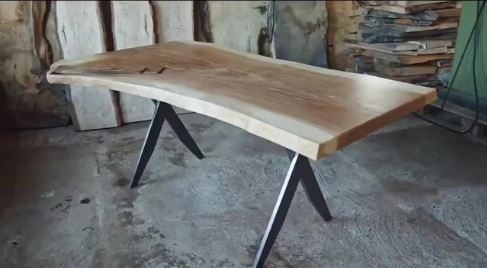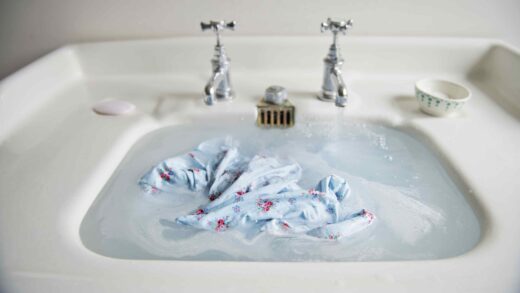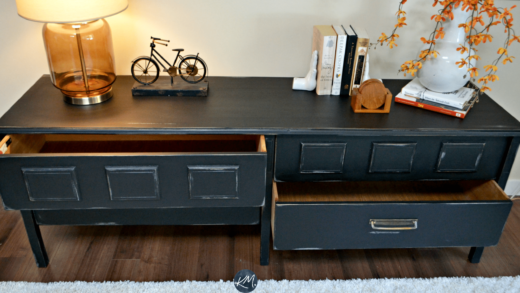Your wood furniture will have an unmatched luster and depth after being waxed, protecting the wood. How to furniture wax? Fortunately, there is an easy recipe for making nontoxic, fragrant furniture wax.
Table of Contents
Why Wax Wood?
Wax is not always necessary to paint or varnish frequently offers the same security. Most frequently, wax is used because it leaves a natural finish on the wood while protecting it. Furniture wax is excellent for bringing out the natural characteristics of your wood and highlighting all the knots, bumps, and coloring that give your wood its individuality.
Wax is waterproof, making it ideal for coffee tables and other furniture items that experience a lot of use and abuse. It helps your wood stay healthy for a longer period of time by providing protection against bumps and spills. It also creates a barrier against dust, making cleaning simple.
Applying furniture wax is simple; it frequently comes in liquid form, and it is applied similarly to painting. Although applying a fresh coat of wax to your furniture about once a year is all that is necessary to keep it looking its best, it doesn’t require much maintenance.
The disadvantage is that wax is notoriously difficult to remove. If you need to remove a layer, the sheen can be removed with a lot of work and sanding. If you’re looking for a temporary fix, be ready for a less-than-perfect finish because it will fade over time. Although there are products available that make this process simpler, like wax remover, you still need to scrub.
Applying multiple coats of wax can result in the build-up, which makes your wood look lifeless and dull, the exact opposite of what you want.
A white ring of damage will appear on the surface of your wax tables if you leave hot plates or food bowls on them. Heat damages wax.
How to Furniture Wax?
We will introduce the guidance from two aspects as follows:
Selecting a Wax
For a smooth, organic finish, go with beeswax. Buy a bottle of furniture wax polish if you want wax that doesn’t have artificial additives. Your furniture will have a gentle glow from this polish, which is simple to apply. Remember that because it’s such a soft wax, it won’t shield your furniture as well as other polishes and will be sticky unless you buff it thoroughly.
- Products that combine beeswax and carnauba wax may be available; these ingredients increase the polish’s durability.
For a long-lasting finish, look for a product with carnauba wax. Popular vegetable wax called carnauba is often included in furniture polishes because it buffs to a brilliant shine. Additionally, it endures longer than just beeswax.
Did You Know: You may come across furniture oils that combine mineral oil and carnauba wax. These are simple to apply, but they won’t offer as much long-lasting protection as beeswax or carnauba polish.
To protect ornate or heavily carved furniture, use liquid wax. It won’t last as long because liquid wax doesn’t have as much wax as paste wax does. If you want to finish furniture that has numerous decorative carvings that would be challenging to work a paste wax into, go with liquid wax.
- For intricately carved chairs or table legs, as an illustration, pick liquid wax.
Don’t wax furniture with floor wax. The majority of commercial floor waxes contain less wax, making them simpler to apply to an entire floor. This wax is also softer, so it won’t protect furniture as well as furniture wax.
- If you do decide to use floor wax, you’ll likely need to reapply it more frequently than once or twice a year, perhaps every few months.
Applying the Wax
To avoid kicking up dust, work in a spotless environment. To wax the furniture, choose a room with good ventilation and make sure the area is free of dust. Perhaps you should work in a tidy workspace rather than a sawdust-filled woodworking area.
- To provide fresh air, open a window. Your furniture will dry more quickly as a result.
In the wax, dunk a brush or clean cloth. If you’d rather not get wax all over your hands, use a stiff wax brush with flat bristles to coat the bottom of the bristles with wax. Put wax on the cloth using a coin-sized scoop.
- Check the cloth for any loose threads that might cause the wax to become contaminated with fibers.
- To remove dust, wipe the surface with a soft, damp cloth. Clean the surface before applying wax to painted or unfinished furniture. Remove all dust and dirt from the furniture’s surface by wiping it with a clean, damp cloth. By doing this, dust won’t accumulate in the wax finish.
- Utilize lint-free clothes or clothes with secure edges. This stops fibers from contaminating the wax. If you don’t mind getting some wax on your hands, you could also use a soft cloth or rag.
Make circular motions while applying a thin layer of furniture wax. Start from one side of the furniture and work your way to the other side while applying the wax gently to the entire surface. Streaks are avoided by making small, circular motions. To apply more wax instead of lifting it off, keep dabbing the cloth or brush into the wax after a few swipes.
- Applying several tiny, thin coats of wax is preferable to one thick coat that would dry dull and hazy. If there are wax ridges visible on the furniture, you have applied too much wax and must buff it off.
- As you go, try to apply the wax gradually.
Tip: Although you can cover furniture that has been painted, varnished, or lacquered, it’s challenging to apply wax to latex-painted furniture. In order to prevent the wax from absorbing, a latex surface is impermeable.
As directed by the manufacturer, let the furniture air dry. Although most furniture waxes dry in a matter of minutes, it may be best to wait up to 30 minutes for the wax to dry. The wax will turn from shiny to dull as it dries.
- If you’re in a chilly or poorly ventilated area, the wax may take longer to dry.
- When the wax is completely dry, gently touch it to check if it’s no longer sticky in a discrete area.
- For a shiny finish, buff the waxed furniture in a circular motion. Rub the furniture gently until the wax finish shines using a clean, wax-free cloth. The furniture won’t be as lustrous as you like until you keep applying circular motions to the entire surface.
- Use a really soft cloth to get a shinier finish. A terry cloth, an old T-shirt, a cotton diaper, or another alternative to soft cotton clothes could be used.
- It doesn’t matter whether you buff the furniture’s grain in one direction or the other.
- To buff the wax, you can also use a buffer drill attachment.

Before adding a second layer of wax, wait at least 4 to 8 hours. Applying another coat of paint to painted furniture might not be a good idea because it would make it even glossier. Plan to apply a total of three layers if you’re covering unfinished furniture, but don’t forget to buff the wax in between each coat.
Wait for about 30 minutes before using or placing anything on the furniture after you’ve finished waxing and buffing it.
One to two times per year, apply a fresh coat of wax. The furniture will become shiny as a result of your weekly dusting efforts. It’s time to apply a fresh coat of wax as soon as you notice that the furniture isn’t buffing up to a shine. Apply wax to the furniture using the same procedures.
- Wax gradually wears off and oxidizes over time, which is why you have to reapply it.
What Are Types of Furniture Wax?
You can choose the furniture wax you want to use in a few different ways.
The easiest option is typically to choose your furniture wax based on the project you’re working on since you know it’s going to work. Wax for floors, general multipurpose interior wax, and furniture are all available for purchase.
A certain amount of scuff resistance is provided by furniture wax. It’s waterproof and ideal for furniture like coffee tables, dining tables, and bedside tables.
To handle high-traffic areas of your home, floor wax is more durable than regular wood or furniture wax. It keeps your wooden flooring in nearly perfect condition by shielding it from scuffs, chips, and stains.
On almost any wooden surface—aside from flooring—interior wax can be applied. If you want a quick wax or for touch-ups, it’s helpful. Additionally adding color, our interior furniture wax gives the wood a vibrant appearance.
Wax can then be further classified according to color and application style.
Some waxes are pigmented and give your wood a subtle pop of color while maintaining a raw, organic appearance.
Other furniture waxes enhance the natural appearance of your wood or aid in the aging process. If you have a piece of pine furniture that you want to give some personality to, this kind of wax is perfect.
You can also purchase wax that is completely transparent and maintains the natural color of your wood. After painting the furniture, this wax is excellent for sealing it.
There are various types of wax as well. Because you can paint liquid wax on it, it works well for furniture that has a lot of intricate details or unique shapes. Better for smooth surfaces is paste wax, which requires more effort to apply and is harder to work with.
How to Choose the Right Furniture Wax?
What you are waxing determines the type of wax you use.
Ask yourself whether you need a colored wax given the effect you hope to achieve.
The type of wax you use will also depend on the specifics of your furniture. While a table or cabinet top can benefit from paste wax, furniture with a lot of grooves or detail is easier to coat with liquid wax.
How to Get Furniture Wax Off Wood?
No matter if you want to paint your wood or remove a wax finish to replace it, it is possible, albeit laborious.
To get rid of the old wax as much as possible, start by using a furniture wax and polish remover. The initial covering will be removed as a result, but you might still have to put in some effort to get rid of the remaining material.
After removing any extra wax, rub the surface with some sandpaper to remove the coating.
It’s extremely unlikely that you’ll complete the task flawlessly and completely remove the wax. However, you will have produced a surface that is sufficiently rough to coat over by sanding the wax. Bear in mind, however, that you might require more coats than usual of whatever you’re using to recoat, as wax patches can produce a slick surface that makes adhesion challenges.
Now, do you know more about furniture wax?



